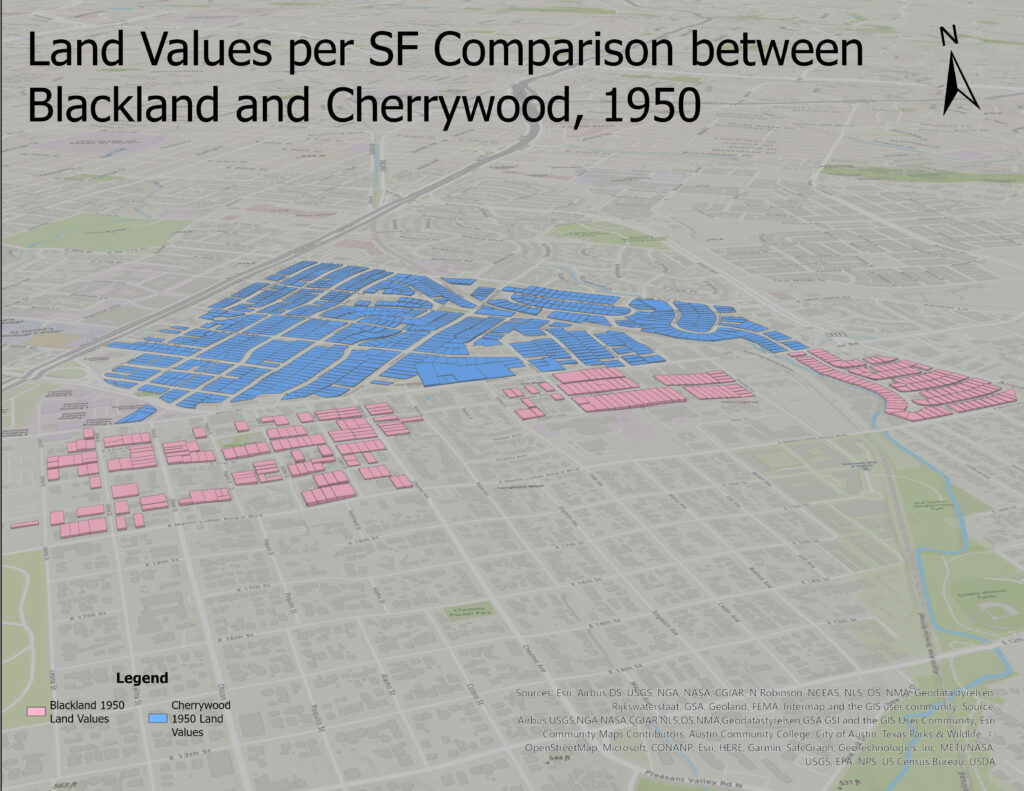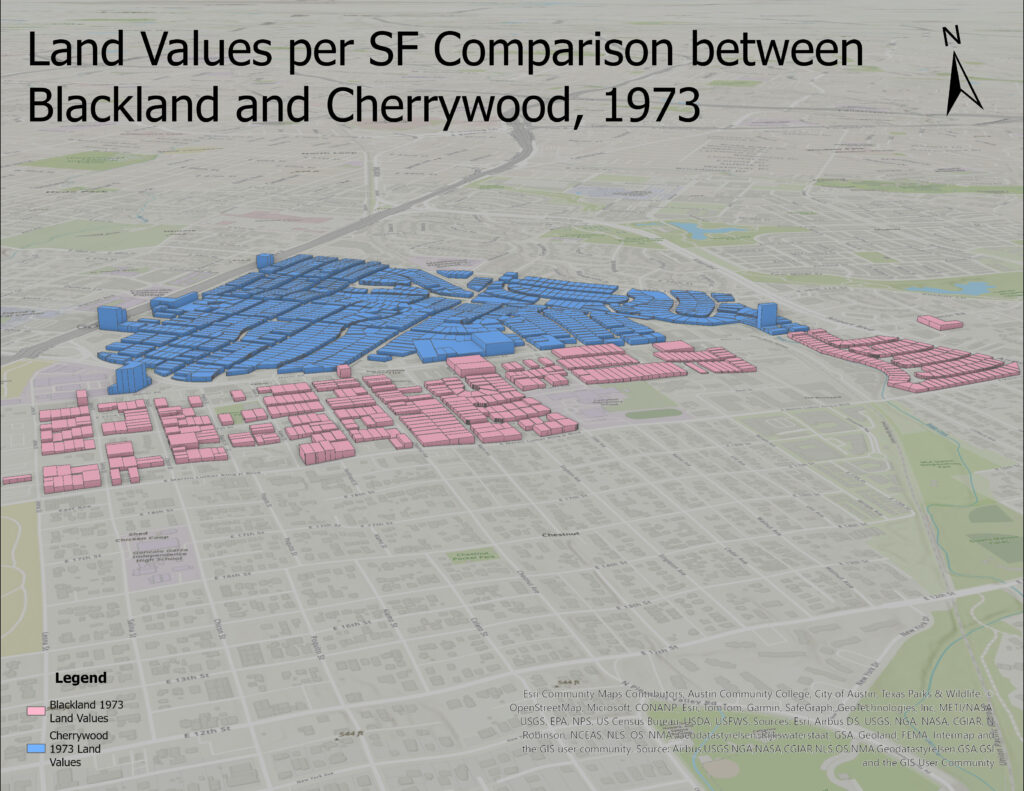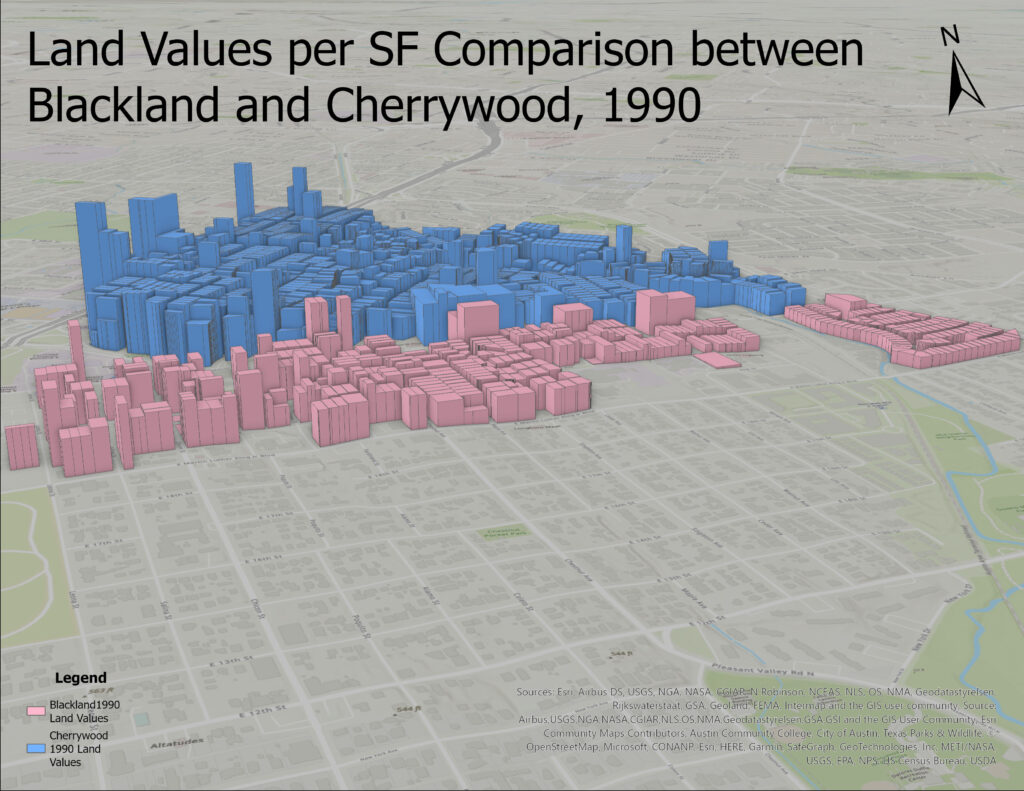Dispossession Through Suppressed Property Value
Our previous study (Gordon et al 2022) examined the cost of dispossession associated with the forced abandonment of historic Black settlements outside East Austin. This report looks at the dispossession that took place in East Austin through the practice of suppressing property values known as redlining. Across the twentieth century, we estimate, Black homeowners’ assets in East Austin were halved by racist redlining, amounting to a loss of at least $24,287,707 in 1990, approximately $57,000,000 in today’s dollars. Furthermore, the suppression of values through redlining paved the way for the gentrification of East Austin, beginning in the 1990s.
Research



By 1950, the practice of redlining was in effect, dating back to at least 1935. The effects of yeas of differential treatment of the two neighborhoods could begin to be seen, and when both neighborhoods were substantially developed. Already in 1950, values were lower in Blackland, and the gap continues to grow throughout the years.
From the 1950 through at least the 70s, the value gap was not great enough to attract the attention of profit-seeking investors and, therefore, relative values in Blackland/East Austin continued to decline vis-à-vis Cherrywood and other non-redlined areas. 1970 represents a midpoint in the transformation of land value between the two neighborhoods.
By 1990, land values in Blackland were approximately half of those in Cherrywood (46.37%). That is, one square foot of dirt a block south of Manor Road was deemed to be half
the value of a nearly identical one a block north. In the years that followed, the City of Austin identified central East Austin as a redevelopment zone, thereby starting the beginning of an increase in property values in East Austin that has continued to this day.
The Report
 Loading…
Loading…
Research Team
Rich Heyman, Shaw Vallier, Alap Dave